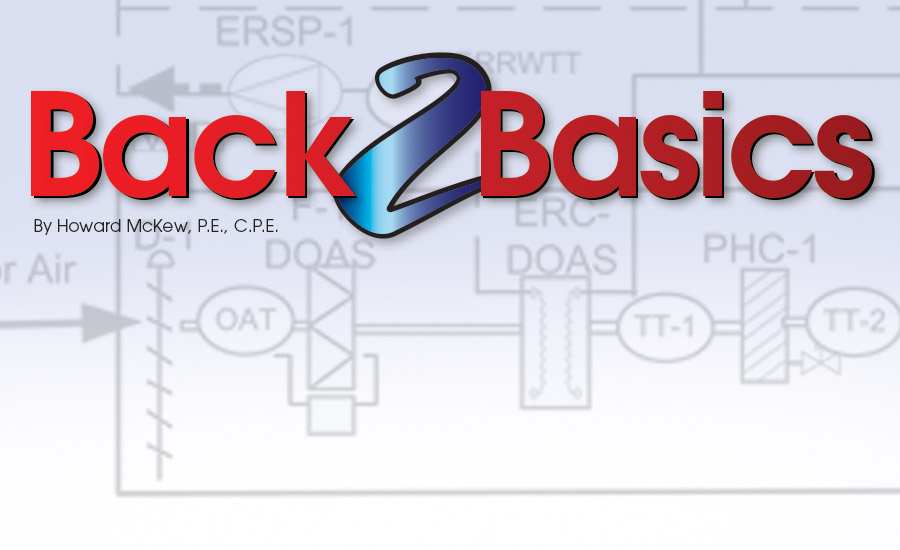Project Delivery Method: Integrated project delivery (IPD).
Owner-IPD Team: Health care facility vice president support services, the project manager of capital projects, facility manager (in-house), an IPD project manager, an owner representative (consultant), architect, and HVAC consultant.
HVAC Project Team: An HVAC technician (in-house staff); ATC technician subcontractor; a BAS technician (in-house staff); an operations and maintenance (O&M) technician (in-house staff); a third-party commissioning consultant (CxC); a third-party testing, adjusting, and balancing (TAB) technician; and an infection control consultant (IC).
Application: Healthcare Facilities, Chapter 9.
Project Type: Infrastructure (central heating, cooling, and humidification).
References: 2019 ASHRAE Handbook – HVAC Applications; 2020 ASHRAE Handbook – HVAC Systems and Equipment; and, for additional reference, check the codes and standards section in the back of each ASHRAE handbook.
Other References: ASHRAE Humidity Control Design Guide for Commercial & Institutional Buildings; ASHRAE Guide for Buildings in Hot & Humid Climates; ASHRAE Indoor-Air Quality Guide: Best Practice for Design, Construction, and Commissioning Systems; ASHRAE Standard 170 (ventilation of health care facilities), and ASHRAE Standard 202 (commissioning process for buildings and systems).
DESIGN INTENT DOCUMENT (DID)
The HVAC system selection and design intent is based on the process outlined in ASHRAE Handbook 2020, Chapter 1, “HVAC System Analysis and Selection” and includes the following:
- The owner’s building program goals and additional goals;
- System constraints and constructability constraints;
- A specialized system retrofit to the existing central air-handling system serving eight renovated isolation rooms;
- Automatic controls shall include temperature controls, a BACnet interface, an internet interface, and an existing BAS interface;
- Program and project goals, including functional goals, refer to Chapter 1, 2020 Handbook; budget goals, first cost and operating cost; timeline goals, the occupancy due date, and pre-purchased equipment date; management goals, IPD team participation, capital projects management, and mechanical and electrical operation and maintenance management;
- Other goals, including occupant comfort and controlled humidification space control;
- Available utilities include gas (propane), electrical power, emergency power, high-pressure steam (HPS), condensate return, and process cooling water;
- Existing equipment includes a central air system supply air and/or return air cfm with terminal reheat coils, steam humidification within the air-handling unit, a hot water heating system, an air-cooled chiller air conditioning system, an air-side economizer, a MERV-7 prefilter, and a MERV-14 final filter within the air-handling unit.
- Low-velocity, sealed (aluminum) sheet metal volume dampers and fire dampers are included.
DESIGN CRITERIA DOCUMENT
- The HVAC design criteria shall be in sync with the project’s delivery method and owner’s project requirements.
- The design criteria shall be based on ASHRAE 90.1 and state energy code compliance for outdoor air temperature compliance.
- The utility shall be the existing steam humidification system, hot water heating system, and chilled water cooling system.
- New automatic controls shall be interfaced with the existing BAS system for the new city water spray coil module within the existing air-handling unit.
- The new evaporative cooling coil shall be provided in sync with existing mechanical during the year when adiabatic cooling is practical.
- The existing central air system with eight terminal reheat coils shall provide space temperature and humidity control to maintain 40%-60% relative humidity within each room while maintaining 68°F in the heating season, 74° in the cooling season, and space pressure maintained at 0.05-inch gage positive pressure.
- The in-house BAS technician will update existing safeties and alarms associated with occupant comfort, IAQ, and area space pressure controls working with the third-party CxC and third-party TAB technician.
- The facility manager shall have the O&M technicians trained to accommodate policy and procedure changes as they affect HVAC system occupant comfort and IAQ.
To see this month’s B2B quiz, click here.
To see the answers to this month’s B2B quiz, click here.



